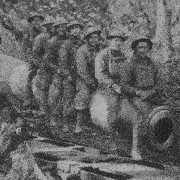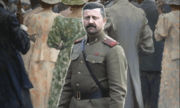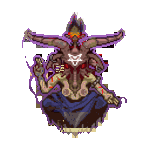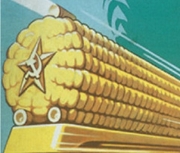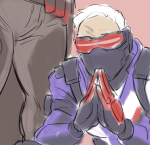|
What is the most powerful flying bug? This poll is closed. |
|||
|---|---|---|---|
| 🦋 |
|
15 | 3.71% |
| 🦇 |
|
115 | 28.47% |
| 🪰 |
|
12 | 2.97% |
| 🐦 |
|
67 | 16.58% |
| dragonfly |
|
94 | 23.27% |
| 🦟 |
|
14 | 3.47% |
| 🐝 |
|
87 | 21.53% |
| Total: | 404 votes | ||
|
I'm sure at least a few Ukrainians have realized that the plans being made for them are all the result of the Gulf War, not that it helps. I was just reading about Iraqi fortifications - most of which were not assaulted by the Coalition - and it's estimated that 30-40% of Iraqis, perhaps more, had either deserted as individuals or retreated as units out of Kuwait before the ground war began - as a result of the aerial bombardment shattering their morale, and because the Iraqi senior command had no intention to fight for Kuwait - both they and Saddam had assumed there would be negotiations. So - the assaults on those fortifications which two generations of officers have taken as proof that fortifications, as a concept, are obsolete, were against positions that were at least partly unmanned. Also, the aforementioned weeks of aerial bombardment. Okay, so overlooking the incorrect lessons NATO may have learned from this, we didn't even give Ukraine the same tools. If you believe fortifications are obsolete because you can assemble a massive air campaign against a mostly hapless enemy, that does not mean fortifications are obsolete without the air campaign, or if the enemy isn't hapless. If Ukraine had 2500 aircraft and bombed those positions for 40 days, then mostly manoeuvred around them through empty desert, sure. Why would they possibly succeed, even if you believe NATO has a method to overcome them?
|
|
|
|

|
| # ? May 24, 2024 18:56 |
|
Random rear end in a top hat posted:The West criticizes the Ukrainians for 'Soviet-style tactics,' but really they all their military strategies from Starship Troopers. i'm from Langley and i say coup 'em all!!!
|
|
|
|
Frosted Flake posted:I can't get over 18 of Ukraine's 20 ports being state owned on the eve of Maidan before free market efficiencies transferred the hundreds of millions of dollars of annual revenue into private hands. Good lord. Post-Maidan Ukraine really boils down to stripping its infrastructure and state assets to parts to be sold to whichever western capitalists are willing to pay. What a scam.
|
|
|
|
Mr SuperAwesome posted:when was the last time an army did this successfully, smashing through a peer army through a full frontal assault on their prepared defenses (i.e. not just going around them)? maybe end of ww1 but that doesn't really count? D-day, ish? probably the north vietnamese 1974-75 offensives
|
|
|
|
when trump wins how will the us involvement in Thee Ukraine change?
|
|
|
|
stephenthinkpad posted:Are there stats that support before maiden, Ukraine's economy has higher share of state owned enterprise and "healthier" military industry? Tbf, this one is Russia's fault, but Ukraine certainly had a healthier Navy before Russia annexed Crimea and like half of the stationed Ukranian soldiers in Crimea defected immediately.
|
|
|
|
Frosted Flake posted:I'm sure at least a few Ukrainians have realized that the plans being made for them are all the result of the Gulf War, not that it helps. Also explains how everyone in the west expected Russia to collapse as a result of sanctions. Nobody realized that Russia is not Iraq.
|
|
|
|
OctaMurk posted:showing my gratefulness by summoning your ambassador and chewing him out Ukarena
|
|
|
|
VoicesCanBe posted:Good lord. Post-Maidan Ukraine really boils down to stripping its infrastructure and state assets to parts to be sold to whichever western capitalists are willing to pay. What a scam. the grain deal is so important to the west because huge western agri-businesses set themselves up in the arable regions of ukraine. the post-maidan government started leasing out that state-owned land and if those businesses can’t export the grain out, there’s a financial hit the cover that it feeds africa and asia is mostly to make it appear as a moral issue when in reality, there’s friction between poland and ukraine due to these largely US owned businesses undercutting grain prices in Europe
|
|
|
|
Hedenius posted:Also explains how everyone in the west expected Russia to collapse as a result of sanctions. Nobody realized that Russia is not Iraq. There were all of those official statements and the media cycle referring to Russia as a "Gas Station"....
|
|
|
|
Frosted Flake posted:There were all of those official statements and the media cycle referring to Russia as a "Gas Station".... america, #1 best at handling pandemics in 2019 according to experts
|
|
|
|
Palladium posted:america, #1 best at handling pandemics in 2019 according to experts #2 was the UK
|
|
|
|
https://twitter.com/eyrtxd/status/1686867321325748224?t=5bsF1HbQ4nDo1wDRNnNAdg&s=19
|
|
|
|
gradenko_2000 posted:https://twitter.com/SniperFella/status/1686669276936028160?t=yMJ1ahuXOy7Se45sJ4riNA&s=19 How many people answered this one incorrectly?
|
|
|
|
Lostconfused posted:How many people answered this one incorrectly? They only blew half his face off with artillery. Finland prevails
|
|
|
|
Look here tankies, let us draw a distinction between being of the Nazis and being with the nazis
|
|
|
|
Mr. Lira is not in the news, nobody cares if he's in Russia or Bofa. It's not news.
|
|
|
|
Toplowtech posted:Attacks aren't supposed to make your political enemies look cooler than they are. then why are these the only ones the democrats use against trump
|
|
|
|
Megamissen posted:no that was the opposite It started because the allies were tired of being pushed off their land and treated like second class citizens, which they were. The Romans annihilated a couple of major city-states but ended the war by granting everyone (male, non-slave) in Italy Roman citizenship.
|
|
|
|
Cerebral Bore posted:where it falls apart is that western countries are not going to build a million flying lawnmowers, but rather like two dozen overengineered bespoke superdrones that need about as much maintenance as your average fighter jet Observing the problem has never once enabled neoliberalism to solve it
|
|
|
|
sullat posted:It started because the allies were tired of being pushed off their land and treated like second class citizens, which they were. The Romans annihilated a couple of major city-states but ended the war by granting everyone (male, non-slave) in Italy Roman citizenship. There are some great recent books on this, and the other Italic peoples of Italy. A lot of the scholarship is starting to make connections to Late Antiquity insofar as elite group behaviour, cultural connections and frontier theory is concerned. The gist is that Rome unified Italy so quickly not through bloody conquest - which later Roman historians mythologized as an example of Roman valour and foreshadowing the future glories of the empire, and contemporaries propagandized because a successful career as a general was important to a political career - but through cutting deals with the elite of the other cities of Italy, who often moved to Rome as part of the process of unification. The exception were the Samnites, who, as a tribal society, had no urban elites to negotiate with - as they had a fundamentally different political economy and social structure, no deal could be worked out. Anyway, this initially worked out really well, as all of these states either allied with Rome or initially resisted before negotiating a place for their elites in the Roman senate. The problems started to happen once Rome started reneging on those deals. So you're entirely right, it's just worth pointing out who was being treated like second class citizens - the same elites they had forged this relationship with.
|
|
|
|
Cerebral Bore posted:where it falls apart is that western countries are not going to build a million flying lawnmowers, but rather like two dozen overengineered bespoke superdrones that need about as much maintenance as your average fighter jet thats because we care about the lives of our drones unlike the bolsheviks
|
|
|
|
accommodation and assimilation of elites goes way back to Rome’s founding.
|
|
|
|
sullat posted:It started because the allies were tired of being pushed off their land and treated like second class citizens, which they were. The Romans annihilated a couple of major city-states but ended the war by granting everyone (male, non-slave) in Italy Roman citizenship. they were not forced to become citizens though, that was a concession rome had to give
|
|
|
|
fizzy posted:
Is it still nepotism when you give a position to your wife or it has a more specific term?
|
|
|
|
supersnowman posted:Is it still nepotism when you give a position to your wife or it has a more specific term? when you give a position to your wife it's a sacrament of matrimony
|
|
|
|
Frosted Flake posted:Okay, so overlooking the incorrect lessons NATO may have learned from this, we didn't even give Ukraine the same tools. If you believe fortifications are obsolete because you can assemble a massive air campaign against a mostly hapless enemy, that does not mean fortifications are obsolete without the air campaign, or if the enemy isn't hapless. If Ukraine had 2500 aircraft and bombed those positions for 40 days, then mostly manoeuvred around them through empty desert, sure. Why would they possibly succeed, even if you believe NATO has a method to overcome them? This is really the most egregious thing about the way the war is being fought. Massive amounts of air power can, in principle, substitute for a deficiency in tube and rocket artillery. Whether it's efficient to do that as opposed to just making lots of guns and shells is another matter, although there are advantages especially for the attacker. But having a huge disadvantage in artillery *and* having a huge quantitative and qualitative disadvantage in the air *and* a huge disdvantage in ground based air defenses....and then thinking, what, you are going plow through with the power of
|
|
|
|
Ukraine need to wait for an overcast day to nullify the Russian air power advantage, amateurs
|
|
|
|
|
supersnowman posted:Is it still nepotism when you give a position to your wife or it has a more specific term? But his wife was already working for him, so its just asking the wife to look over the accounting book.
|
|
|
|
fizzy posted:Good news for Ukraine - Ukraine is destined for succeeding at its breakthrough campaign. wonderful news
|
|
|
|
Frosted Flake posted:There were all of those official statements and the media cycle referring to Russia as a "Gas Station".... its p funny if you think about it even medium hard, basically what's being said is that russia is irrelevant because all they have is a massive slice of the thing that everybody needs and keeps the world economy running
|
|
|
|
heartwarming human interest story today in the nyt about ukriane cleansing orthodox churches out of Ukraine.
|
|
|
|
euphronius posted:heartwarming human interest story today in the nyt about ukriane cleansing orthodox churches out of Ukraine. that's too bad. for a while they were trying to make them more appealing to certain local elements      Типовий Кременець in 2017 on Facebook: quote:Temple of the Holy Transfiguration of the Lord. Kremenets.
|
|
|
|
fizzy posted:Bad news for Russia - More than 8,500 Russian paratroopers have been wounded while fighting in Ukraine
|
|
|
|
im going to kiss putin and help him do an imperialism
|
|
|
|
War is bad. I don't like war
|
|
|
|
Second Hand Meat Mouth posted:im going to kiss putin and help him do an imperialism sounds hot
|
|
|
|
Backcountry posted:War is bad. I don't like war wow so your saying that the ukrainians should all just commit suicide?
|
|
|
|
Morbus posted:This is really the most egregious thing about the way the war is being fought. Massive amounts of air power can, in principle, substitute for a deficiency in tube and rocket artillery. Whether it's efficient to do that as opposed to just making lots of guns and shells is another matter, although there are advantages especially for the attacker. I would say this war also has shown the limits of airpower as well, as long-range SAMs coupled with AWACS support can make potential strikes too costly to consider, which is going to limit the effective range of airpower. But yeah, without superiority in the air or a superiority in artillery, they just had no way to move forward and were just setting up tank grave yards. DC wants this war to be over, and the assumption was the great counter-offensive was the way to do it, and every criticism about how impractical it was, was swept aside.
|
|
|
|

|
| # ? May 24, 2024 18:56 |
|
When you put it that way, forcing the Ukrainian army to destroy itself and then being stingy with suppling them after might end the war sooner than however long Ukraine might be able to hold out on the defensive.
|
|
|



